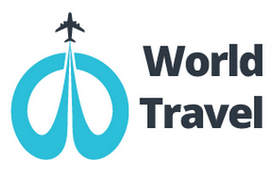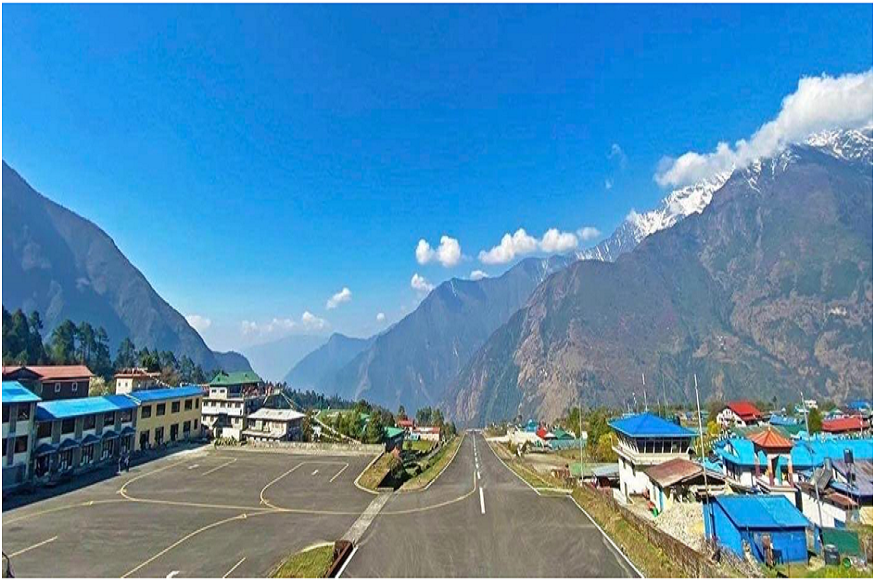When people dream about mountains, they always first come up with pictures of himalayas, big snow peaks, thin air, and trails going up and down like forever. The journey to the heart of the Himalayas is not just a trek; it feels like a life-changing walk. You go through sherpa villages, rivers, and forests, cross high suspension bridges and slowly get close to Everest, the top of the world. Every trek here has its own story, some with glacier lakes, some with helicopter flybacks, and some with high passes. all bring tough walking and thin air but gift you with views and culture you will never forget.
Everest Base Camp Trek – Overview
The Everest base camp trek is the classic, the dream for every trekker, where you follow the trail sir edmund hillary and tenzing once walked. start with a flight to lukla, then climb slowly through namche bazaar, tengboche, dingboche, and gorak shep. along the way you see ama dablam sharp like a knife, lhotse rising, and finally the khumbu icefall close at base camp. It takes around 12 to 14 days, giving time to acclimatize, because air gets thinner each step. Tea houses are welcoming with dal bhat and a warm stove. When I reach base camp, flags flutter, glaciers crack, and hearts beat fast. This trek is not just a mountain view; it is a journey through sherpa land, a monastery, and the strong spirit of climbers.
Everest Base Camp Trek – History
The Everest base camp trail became famous after hillary and tenzing summit 1953. Before that only local sherpa and traders used paths. Later climbers and trekkers follow the same route. From the 1960s, teahouse trekking started; now it is the most walked trail in Nepal, with the history of mountaineers everywhere.
Everest Base Camp Trek with Helicopter Return – Overview
Many trekkers now choose the everest base camp trek with helicopter return; it saves days and gives a thrill in the sky. You walk the same trail up to base camp, feel a full trekking adventure step by step with acclimatization, and see all the mountain views and village life. But instead of a long walk back, a helicopter comes to pick you up from gorak shep or lukla, and in one hour you fly above glaciers, peaks, and river valleys all the way to Kathmandu. This makes the trek is around 8 to 9 days only. It is good for people with less time but who want a full Everest base camp feel. and the flight itself is an experience, because seeing Everest, nuptse, and glaciers from a helicopter window is something unforgettable.
Everest Base Camp Trek with Helicopter Return—History
Helicopter rescue and supply in khumbu started many decades ago, but only later did it turn into a tourism option. Treks with heli returns became popular after the 2000s, when better helicopter service came. Now many trekkers combine a foot journey up with a luxury flight back, mixing tradition with modern.
Gokyo Valley Trek – Overview
Gokyo valley trek is about turquoise lakes shining under giant peaks. Instead of going straight to base camp, this route takes a side valley west of khumbu Glacier. The trek starts the same way to namche, but then heads to Dole, Machhermo, and finally gokyo village near the big lake. From gokyo ri hilltop you see cho oyu, everest, lhotse, makalu all together in one frame. You also walk beside Ngozumpa Glacier, the longest glacier in Nepal. trek around 12 days, less crowded than base camp, but full of quiet beauty. The lake water is so blue, like the sky, reflecting a mountain mirror. Sherpa villages here are smaller, peaceful, and less busy. gokyo is a choice for trekkers who want mountains plus lakes, a little different path, but still inside the Everest region.
Gokyo Valley Trek – History
The Gokyo lakes are a sacred place for both hindu and Buddhist pilgrims. They come in the august festival to worship water. The trek route developed later, after the base camp route got busy. now gokyo trek known as an alternative trail, combining sacred lakes with high ridge views of the world’s tallest peaks.
Everest Three High Passes Trek – Overview
The Three high passes trek is the toughest adventure in khumbu, because you not only go to Everest base camp, but also cross three giant passes, kongma la, cho la, renjo la, all above 5,000 meters. The trek is a circle route, starting from namche, passing through chhukung, lobuche, gokyo, and thame. Unbelievable views from every pass, glaciers spread wide, and mountains look so close. treks take around 18 to 20 days and demand strong fitness and proper acclimatization. crossing cho la can be icy, renjo la gives a stunning panorama of Everest and gokyo lakes, kongma la wild and remote. This trek is for people who want a full challenge, not just base camp. It brings all the highlights in one journey: lake, pass, glacier, monastery, and sherpa land.
Everest Three High Passes Trek – History
Local sherpa used passes long ago for trade routes between valleys. Later trekkers combined them to make one circuit in khumbu. Three pass trek became known from the 1990s, when more people looked for a harder alternative to the classic base camp. Today it is respected as the ultimate Everest trek.
Why Choose These Treks
People choose these treks because they want to feel close to the world’s tallest mountain and experience landscapes that exist nowhere else. Each trek offers something different: base camp gives the classic route, heli returns save time and show aerial views, Gokyo brings peace and lakes, and three passes bring challenge and wild adventure. Together they show the heart of the Himalaya, not just one side but the full picture. Choosing these treks also means walking in the footsteps of legends and touching the lives of Sherpa people who keep culture alive.
Routes and Itinerary Highlights
The route usually starts from Lukla, then moves to Namche Bazaar, the gateway of Everest. From there, the base camp trek goes up through Tengboche, Dingboche, Lobuche, and finally Gorak Shep and EBC. Helicopter returns follow the same path to base camp, then fly back. The Gokyo trek branches at Namche toward Dole and Machhermo and reaches the Gokyo lakes with a climb to Gokyo Ri. Three passes trek circle all—first to Chhukung for Kongma La, then cross to Lobuche and EBC, then Cho La to Gokyo, and finally Renjo La toward Thame and Namche. Each route highlights monasteries, suspension bridges, yak caravans, prayer wheels, and panoramic viewpoints.
Best Time
The best time is always spring (March to May) and autumn (September to November). In spring, the rhododendron forest blooms and the sky is clear. Also, the climbing season is full of colorful tents. Autumn brings crisp air, long visibility, and less chance of heavy snow. Winter is very cold and risky on passes, while summer monsoon clouds and rain cover mountains. For heli return, spring and autumn are best too because flying is safe with a clear sky.
Cultural Highlights Along the Way
Treks here are not just about mountains but also monastery bells, Buddhist chants, mani walls carved with prayers, and festivals in Sherpa villages. Tengboche monastery stands grand on a hill, where trekkers often join prayer ceremonies. Villages like Khumjung have the Hillary school and hospital, showing the connection between local and world. On the Gokyo side, sacred lakes connect with religious rituals, reminding us that mountains here are holy not only for adventure but also for faith.
Sherpa Culture and Local Life
Sherpa people are the heart of these treks. They live in stone houses, keep yak herds, run tea houses, and guide trekkers through high-altitude land. Sherpas practice Tibetan Buddhism, with life centered around monasteries, family, and mountain respect. Festivals like Dumje or Mani Rimdu bring color and dance. Hospitality is natural—sharing tea, stories, and laughter even with strangers. Their culture grows strong in tough land, and trekking here is a way to witness their life closely, not as tourists but as guests in their home.
Physical Challenges and Acclimatization
All treks are high altitude, meaning less oxygen. Body struggles, sometimes headaches, tiredness, or worse if not careful. Acclimatization days are very important, like in Namche and Dingboche, to help the body adjust. Walking slowly, drinking water, and sleeping well are all part of the strategy. Three passes are the most demanding trek, with long days, steep climbs, and heavy cold wind. Base camp trek is moderate but still tough because of altitude. Helicopter return makes the down part easier but the up part the same. The Gokyo trek has fewer villages, so planning is important. Trekkers must be ready in mind and body.
Permits Required
Every trekker needs permits. For the Everest region, the Sagarmatha National Park permit and the Khumbu Pasang Lhamu rural municipality permit are the main ones. These can be obtained in Kathmandu or at entry points. For Gokyo and Three Passes, the same permits cover. Trekking agencies usually arrange everything, making it easy for trekkers. Keeping permits safe is important because check posts along trails will ask.
Practical Tips for the Trip
Pack light but smart: warm clothes, layers, a sleeping bag, trekking poles, water purification, and good boots. Always walk slowly, respect altitude, and never hurry. Carry cash because there are no ATMs in remote places. Respect Sherpa culture—no touching prayer flags wrongly, no pointing feet toward the shrine. Take care of waste; keep the mountain clean. For heli return, a flexible schedule is needed because weather can delay flights. Train before coming; a stronger body makes the journey easier. Always keep insurance that covers helicopter rescue, because mountains are unpredictable.
Conclusion
Journey to the heart of the Himalayas is more than just a holiday—it is a transformation. Walking through the valley, feeling the wind on high passes, watching Everest glow in the morning sun, and drinking tea with the Sherpa family—all of these combine into a memory for a lifetime. Base camp trek, heli return, Gokyo valley, or three passes—each path shows a different face of the same giant Himalaya heart. Trekkers who go once carry the story forever and often dream of coming again. The Himalaya is not only a mountain; it is a spirit, and those who walk here always feel changed when they go back home.
FAQs
- How long is the Everest Base Camp trek?
Usually 12 to 14 days, depending on pace and acclimatization. - Is helicopter return safe?
Yes, safe in good weather, but flights can be delayed or canceled if clouds or wind are strong. - Which trek is the hardest?
The Three Passes trek is the hardest because of high passes and long routes. - Do I need a guide?
Guides are not always mandatory but are highly recommended for safety, navigation, and cultural understanding. - Can a beginner do these treks?
Base camp treks are possible for beginners with good fitness and preparation. Three passes need more experience. - What altitude sickness risk?
Risk is always above 3,000 meters. Slow pace and acclimatization days reduce danger. - Is Gokyo better than a base camp?
Not better, just different—Gokyo offers lakes and peaceful trails; base camp offers close views of Everest and history. - Best month for trekking?
April–May and October–November are the best months. - Are permits difficult?
No, easy to get; agencies arrange quickly. - What about the internet and charging?
Most villages have internet with a small cost, charging for availability but also offering it for free.

